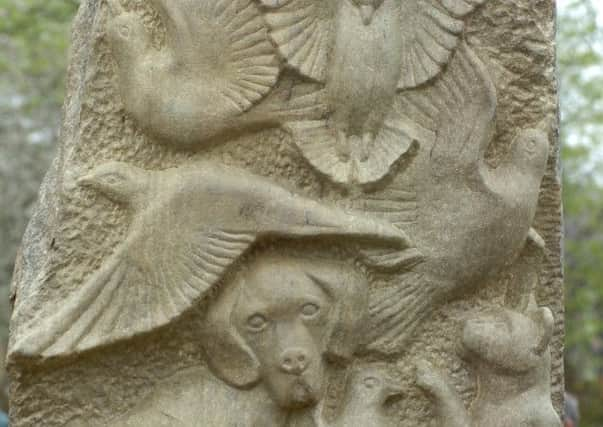The animals that saw action and earned their stripes


IF you walk through Dartmouth Park in Morley, a few miles outside Leeds, you‘ll notice a war memorial.
But this particular stone sculpture isn’t in memory of the men and women who lost their lives, instead it’s dedicated to all the animals that have died serving their country alongside British troops since the First World War.
Advertisement
Hide AdAdvertisement
Hide AdThe front of the memorial depicts a horse rearing up with poppies growing underneath it, while the other side features working dogs, carrier pigeons and a ship’s cat. It was unveiled three years ago following a campaign by former local resident Julie Taylor-Radcliffe and her friend Margaret Barker who wanted a lasting memorial for the animals killed in military action.
Amidst all the carnage and death of the Great War the story of the animals involved, and the terrible price they paid, often gets overlooked. Yet they played a crucial role. Millions were used for transport, to carry vital communications and as companions to the troops during the conflict.
For many people their role has become synonymous with War Horse, the Michael Morpurgo novel that has been adapted into an award-winning play and film, in which a teenager and his horse, Joey, are both sent to the Western Front.
It’s estimated that around eight million horses from all sides died in First World War. In fact, Britain lost so many horses on the front line that more had to be shipped in from North America. Most horses and mules were used to transport supplies, but tens of thousands more were also used as cavalry and to pull gun carriages through the mud.
Advertisement
Hide AdAdvertisement
Hide AdMaintaining communication links between armies that often stretched hundreds of miles was crucial and pigeons proved to be an extremely reliable way of sending messages. They became so important that over 100,000 were used during the course of the war. It seems archaic to us today with all the hi-tech equipment we have at our fingertips, but these birds had an astonishing success rate with the vast majority of messages, around 95 per cent, reaching their destination.
But as Julie points out they also served another purpose. “They had cameras strapped to their chests and were flown over enemy lines to help with reconnaissance. They were also taken up in planes and thrown out to help trace missing pilots.”
Dogs, too, played a pivotal role. “Dogs were used for laying communication cables and barbed wire and also for carrying food to soldiers in the trenches.” They were used by both sides and quickly became targets for enemy soldiers.
Cats proved popular both with sailors and soldiers. “They helped keep the rat numbers down and they also boosted morale amongst the troops. The men could talk to the animals and admit they were frightened and say things they couldn’t say to their comrades.”
Advertisement
Hide AdAdvertisement
Hide AdThey even found themselves caught up in the world of espionage. Official army documents published by the National Archives earlier this year revealed that in 1915 British intelligence officers suspected two cats and a dog of spying for the Germans. The animals were observed repeatedly crossing British trenches, leading suspicious officers to believe the animals may have been planted by the Germans in order to relay messages across enemy lines. Sadly, the document doesn’t state whether the animals were ever detained on suspicion of spying.
It’s estimated that as many as 16 million animals on all sides, including mules, donkeys, cats, pigeons and even camels were deployed during the Great War and that nine million of these lost their lives. “They were like the soldiers,” says Julie. “They were thrown into this terrible war and awful lot didn’t come back so I think they deserve our thanks and recognition.”